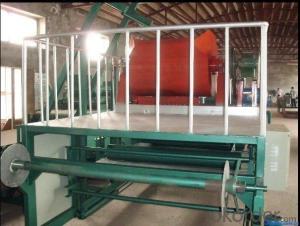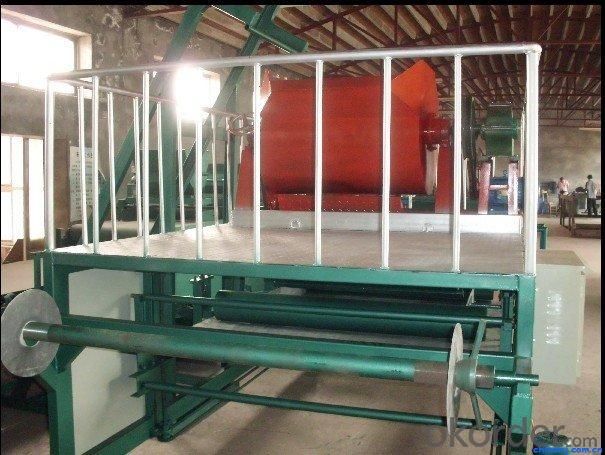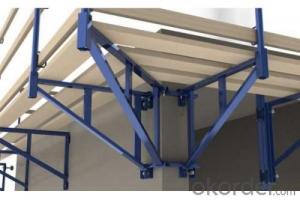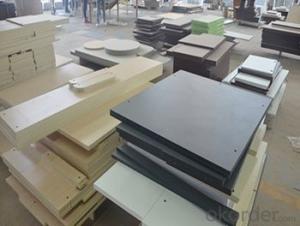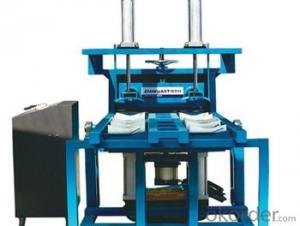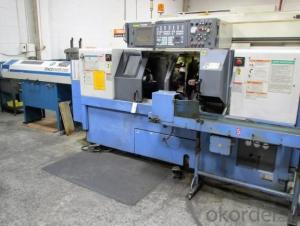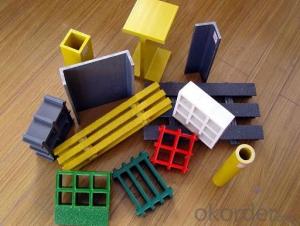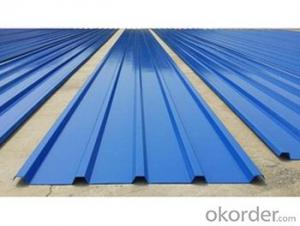FRP Pultrusion Profiles - Pultruded Gratings with Easy Maintenance in Latest Styles
- Loading Port:
- Tianjin
- Payment Terms:
- TT OR LC
- Min Order Qty:
- 34 m.t.
- Supply Capability:
- 100000 m.t./month
OKorder Service Pledge
OKorder Financial Service
You Might Also Like
PRODUCT DESCRIPTION
Pultruded grating is made by a particular assembly process, which using “I” shape as its main load-bearing and special rod to go through the bearing bar. Pultruded grating include the standard grating and the custom grating, the custom grating can be designed to meet customer’s requirement or special using condition by changing the shape, size and space of the bearing bars, the surface can be covered with lozenge panel, grit panel, or added the anti-slippery sand directly.
FRP pultruded grating has the most characteristics of molded grating, but it has its distinct advantages, it has very high fiberglass content in the loading direction, so it has very high load capability, it has more superiority when used at wide span, so that the basic support will be decreased and the project cost will be reduced accordingly.
SPECIFICATION
Thickness (mm) | Bar width (mm) | Open space (mm) | Open rate (%) | Approx weight (kg/m |
25.4 | 15.2 | 22.8 | 60 | 13.2 |
25.4 | 15.2 | 15.2 | 50 | 15.9 |
25.4 | 15.2 | 10.1 | 40 | 18.5 |
25.4 | 40 | 10.8 | 21 | 14.5 |
38.1 | 15.2 | 22.8 | 60 | 15.8 |
38.1 | 15.2 | 15.2 | 50 | 19.1 |
38.1 | 15.2 | 10.1 | 40 | 22.4 |
50.8 | 25.4 | 25.4 | 50 | 16.6 |
50.8 | 25.4 | 12.7 | 33 | 21.1 |
CHOICE FOR PULTRUDED GRATING
Resin: GP resin, ISO resin, VE resin, Phenol resin
Color choice: Yellow, gray, green, custom color
Surface choice: Groove surface, grit surface, lozenge cover surface
FEATURES
a. Anti-corrosion and anti-rust
b. Light weight and high strength
c. Anti-flammable
d. Anti- fatigue
e. Safe and anti-slippery
f. Anti-ageing
g. Easy of maintenance
h. Excellent electromagnetism property
i. Good economic benefit
APPLICATION
Operation terrace,
stair walkway,
ground floor,
trench cover,
sidewalk,
foot bridge,
equipment safety fence,
scaffold.
COMPANT DESCRIPTION
CNBM,China National Building Materials Group is a state-owned enterprise in charge of administrative affairs in china building materials industry. Established in 1984, CNBM is a large group corporation of building materials with total assets of 25 billion RMB and a total staff of 30,000.CNBM now owns 200 subordinating firms of solely owned and joint-venture companies.
FAQ
1.Q:Are you factory or trading company ?
A:We are Factory produce FRP machines and FRP products.
2.Q:If can customized by customers requirements?
A:yes,we can produce the machine with customized size.
3.Q:How about the payment?
A:We accept any kind of payment.
4.Q:What is the guarantee?
A:Gurantee is one year.
5.Q:If you can training?
A:yes ,we can training in our factory also can send engineers to your factory training.
PICTURES
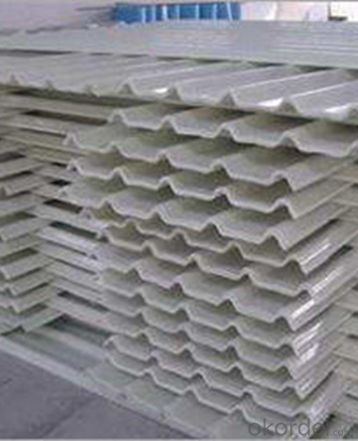
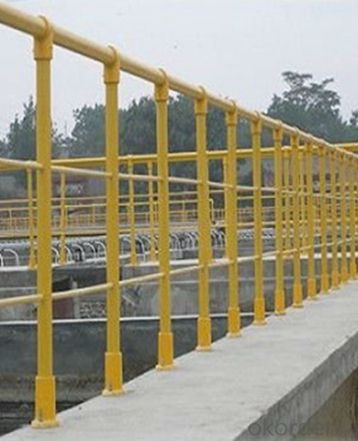
- Q: How are FRP pultrusion profiles manufactured?
- FRP pultrusion profiles undergo a highly controlled and precise manufacturing process. The process consists of several steps. To begin with, the raw materials are carefully chosen. These materials typically include reinforcing fibers like fiberglass, carbon fiber, or aramid, as well as a thermosetting resin matrix. The selection is based on the desired mechanical properties of the final product. Following that, the resin matrix thoroughly saturates and coats the reinforcing fibers. This can be achieved by immersing the fibers in a resin bath or using a resin injection system. Once the fibers are fully impregnated, they are pulled through a heated steel die. The die not only shapes the pultrusion profile but also activates the resin's curing process. This allows the resin to harden and bond the fibers together. While passing through the die, the fibers are continuously pulled by a set of rollers or a gripper system. This pulling force ensures that the profile maintains its shape and dimensions, resulting in a consistent and uniform product. After leaving the die, the profile enters a cooling zone where it is rapidly cooled using air or water. This rapid cooling helps solidify the resin and stabilize the profile's shape. Finally, the cured and cooled profile is cut to the desired length, often using automated cutting systems. Additional finishing processes, such as surface treatment, sanding, or painting, may be implemented to meet specific requirements or enhance the profile's aesthetics. In conclusion, the manufacturing process for FRP pultrusion profiles combines the impregnation of reinforcing fibers with resin, the shaping of the profile through a heated die, and the curing and cooling steps. This process enables the production of lightweight, corrosion-resistant profiles with high strength. These profiles find applications in various industries, including construction, aerospace, automotive, and electrical.
- Q: Are FRP pultrusion profiles resistant to chemicals used in semiconductor manufacturing?
- Yes, FRP pultrusion profiles are highly resistant to the chemicals typically used in semiconductor manufacturing. The composite materials used in FRP profiles have excellent chemical resistance, making them ideal for withstanding the corrosive effects of various chemicals used in this industry.
- Q: Can FRP pultrusion profiles be used in the transportation and logistics industry?
- FRP pultrusion profiles have the capability to be utilized in the transportation and logistics sector. They possess a multitude of advantages that render them suitable for diverse applications within this industry. To begin with, FRP pultrusion profiles are both lightweight and exceptionally robust, ensuring durability. This characteristic makes them highly suitable for implementation in transportation vehicles such as trucks, trailers, and containers, where weight reduction is crucial for enhancing fuel efficiency and minimizing emissions. Despite their lightweight nature, FRP pultrusion profiles are capable of enduring heavy loads and harsh environmental conditions, thereby guaranteeing their reliability and longevity. Furthermore, FRP pultrusion profiles exhibit remarkable resistance to corrosion. Unlike conventional materials like steel or aluminum, FRP does not succumb to rust or corrosion when subjected to moisture or chemicals. This renders FRP profiles apt for applications in transportation and logistics that involve exposure to corrosive substances like saltwater, chemicals, or acidic environments. By incorporating FRP pultrusion profiles, companies can curtail maintenance expenses associated with corrosion and prolong the lifespan of their equipment. In addition, FRP pultrusion profiles offer flexible design options. They can be manufactured in a myriad of shapes, sizes, and configurations to cater to the specific requirements of transportation and logistics applications. Whether it entails structural components, platforms, flooring, or supports, FRP profiles can be tailored to accommodate diverse needs, thereby ensuring optimal performance and functionality. Moreover, FRP pultrusion profiles possess exceptional electrical and thermal insulation properties. This renders them suitable for applications in which electrical conductivity needs to be minimized or thermal insulation is necessary. Within the transportation and logistics industry, this feature can be advantageous for applications like insulation for refrigerated containers or electrical insulation for specialized vehicles. In conclusion, FRP pultrusion profiles are highly suitable for implementation in the transportation and logistics sector. Their lightweight, robust, corrosion-resistant, and customizable nature, combined with their electrical and thermal insulation properties, render them a dependable choice for diverse applications within this field.
- Q: What are the typical dimensions and sizes of FRP pultrusion profiles?
- The typical dimensions and sizes of FRP pultrusion profiles vary depending on the specific application and manufacturer. However, common dimensions range from small profiles measuring around 5mm to larger profiles exceeding 100mm in width or diameter. Lengths can also vary, typically ranging from a few meters to several meters.
- Q: Can FRP pultrusion profiles be customized according to specific requirements?
- Yes, FRP (Fiber Reinforced Polymer) pultrusion profiles can be customized according to specific requirements. Pultrusion is a manufacturing process that involves pulling continuous fibers through a liquid resin bath, then through a heated die to cure the resin and form the desired shape. This process allows for great flexibility in design and customization. The customization options for FRP pultrusion profiles include various dimensions, shapes, colors, and surface finishes. The dimensions can be tailored to meet specific length, width, and thickness requirements. The shapes can range from basic geometries like rectangular or round profiles to more complex designs with custom cross-sections. In terms of color, FRP pultrusion profiles can be pigmented during the manufacturing process to achieve the desired color or can be painted or coated afterwards. This allows for matching specific color requirements or ensuring compatibility with existing structures or products. Furthermore, surface finishes can be customized to achieve desired properties such as increased slip resistance, UV resistance, or fire resistance. Surface treatments like sanding, coating, or adding special additives can be applied to meet specific performance requirements. Overall, FRP pultrusion profiles offer a high level of customization to meet specific project or application needs. They are versatile, lightweight, corrosion-resistant, and have excellent strength-to-weight ratios, making them suitable for various industries such as construction, transportation, infrastructure, and aerospace.
- Q: Can FRP pultrusion profiles be used in infrastructure projects?
- Yes, FRP pultrusion profiles can be used in infrastructure projects. These profiles are lightweight, durable, and corrosion-resistant, making them ideal for applications in bridges, walkways, railings, and other structural components. They offer high strength-to-weight ratios and can be customized to meet specific project requirements. Additionally, FRP pultrusion profiles are non-conductive, making them suitable for electrical infrastructure projects.
- Q: Can FRP pultrusion profiles be used in architectural or decorative applications?
- Yes, FRP pultrusion profiles can be used in architectural or decorative applications. They offer various advantages such as high strength-to-weight ratio, resistance to corrosion and UV radiation, and design flexibility. Additionally, FRP pultrusion profiles can be customized to match specific aesthetic requirements, making them suitable for architectural and decorative purposes.
- Q: What are the features of Glass Fiber Reinforced Plastic Pultruded materials and chairs?
- Glass fiber reinforced plastic extruded sections for chair bars, corrosion resistance, aging resistance, good decorative (wood grain glass fiber reinforced plastic), Candice's color wood grain felt.No recycling value. I'd say that's probably the best feature right now. Installed, no one cares about, will not lose!
- Q: Can FRP pultrusion profiles be used in the telecommunications industry?
- Yes, FRP (Fiber Reinforced Polymer) pultrusion profiles can indeed be used in the telecommunications industry. FRP pultrusion profiles offer several advantages that make them suitable for telecommunications applications. Firstly, FRP pultrusion profiles are lightweight yet incredibly strong, which makes them ideal for use in telecommunications infrastructure. These profiles can be used for designing and constructing structures such as antenna mounts, support poles, cable trays, and enclosures. The lightweight nature of FRP profiles allows for easier installation and maintenance, reducing the overall cost and effort involved in setting up and maintaining telecommunications systems. Secondly, FRP pultrusion profiles have excellent corrosion resistance properties. This is particularly important in the telecommunications industry, as infrastructure components are often exposed to harsh weather conditions and environmental factors. Unlike traditional materials like steel or aluminum, FRP profiles do not rust or corrode, ensuring their longevity and reliability in telecommunications applications. Additionally, FRP pultrusion profiles offer electrical insulation properties, which is crucial in the telecommunications industry. These profiles do not conduct electricity, making them suitable for applications where electrical grounding or isolation is required. This feature ensures the safety of telecommunications equipment and personnel. Furthermore, FRP pultrusion profiles can be customized to meet specific project requirements. They can be engineered to have specific dimensions, shapes, and load-bearing capacities as needed. This flexibility allows for the design and fabrication of telecommunications infrastructure that meets the specific demands of each project. In summary, FRP pultrusion profiles are well-suited for use in the telecommunications industry due to their lightweight, high strength, corrosion resistance, electrical insulation properties, and customization options. These profiles offer a reliable and cost-effective solution for various applications within the telecommunications sector.
- Q: Do FRP pultrusion profiles require regular maintenance?
- FRP pultrusion profiles do not require regular maintenance. One of the key advantages of FRP (Fiber Reinforced Polymer) is its durability and low maintenance requirements. Unlike traditional materials like wood or steel, FRP does not corrode, rust, or degrade over time. This means that FRP pultrusion profiles do not need to be painted, sealed, or treated for protection against environmental factors such as moisture, UV radiation, or chemicals. Furthermore, FRP is resistant to a wide range of chemicals, making it suitable for various industries, including marine, chemical processing, and wastewater treatment. It also has excellent dimensional stability, meaning it does not warp or deform under changing temperatures or humidity levels. While FRP pultrusion profiles may not require regular maintenance, it is still important to inspect them periodically to ensure their structural integrity. This can involve visual inspections for any signs of damage, such as cracks, delamination, or wear. Additionally, cleaning the profiles with mild soap and water can help remove any surface dirt or contaminants. Overall, FRP pultrusion profiles offer a long-lasting and low-maintenance solution for many applications, making them a cost-effective choice in the long run.
Send your message to us
FRP Pultrusion Profiles - Pultruded Gratings with Easy Maintenance in Latest Styles
- Loading Port:
- Tianjin
- Payment Terms:
- TT OR LC
- Min Order Qty:
- 34 m.t.
- Supply Capability:
- 100000 m.t./month
OKorder Service Pledge
OKorder Financial Service
Similar products
Hot products
Hot Searches
Related keywords
